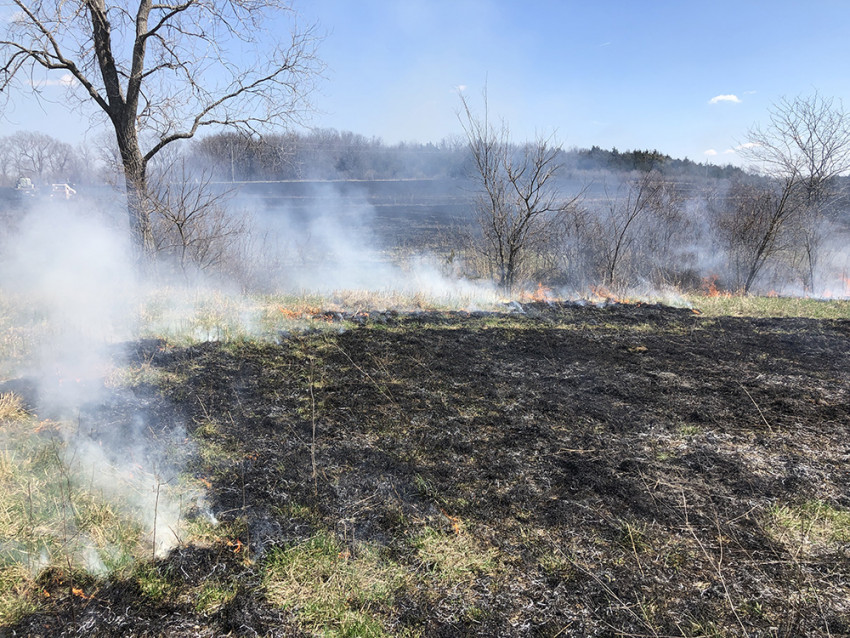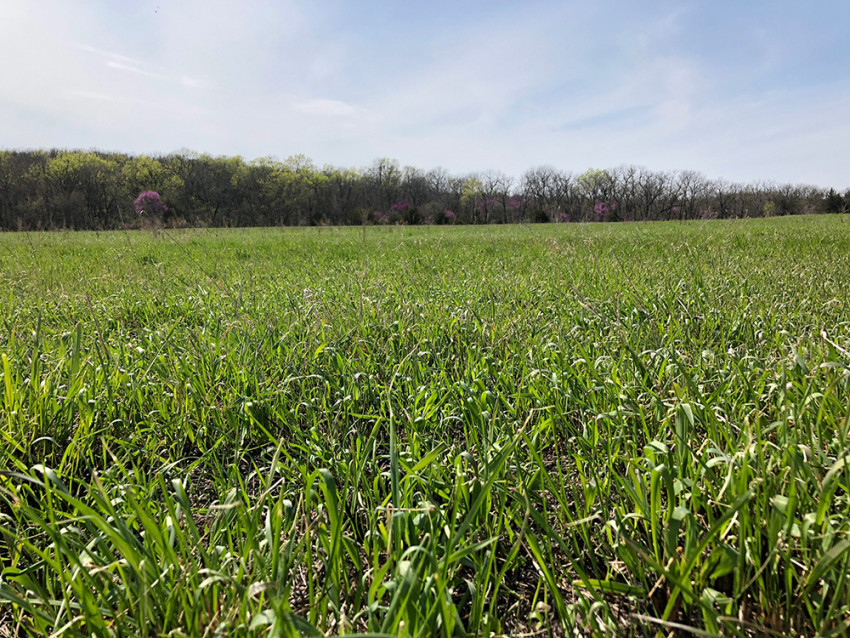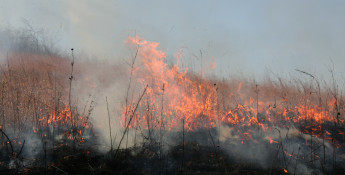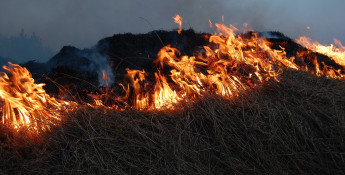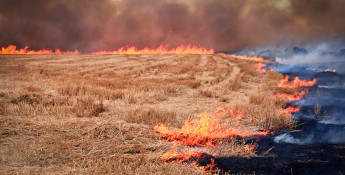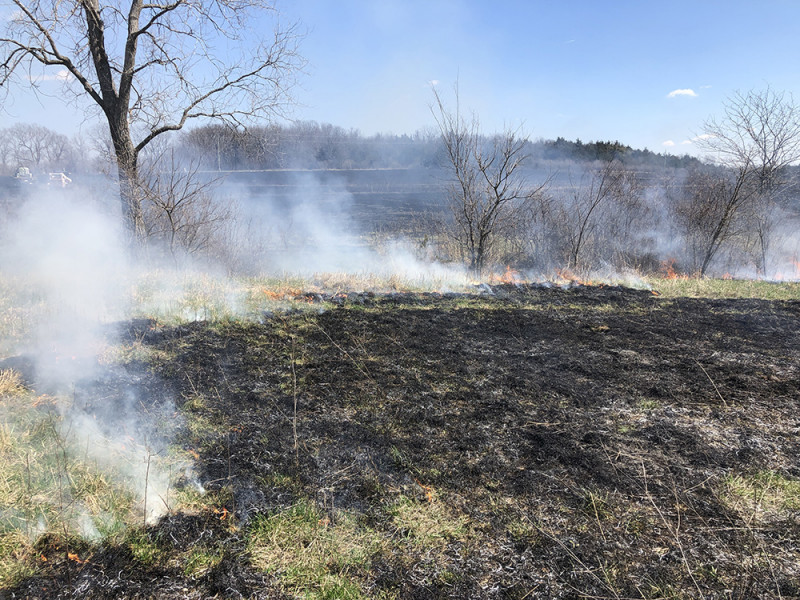By Brandi Buzzard on April 22, 2021
Burning Pasturelands – A Prescription for Healthy Grass
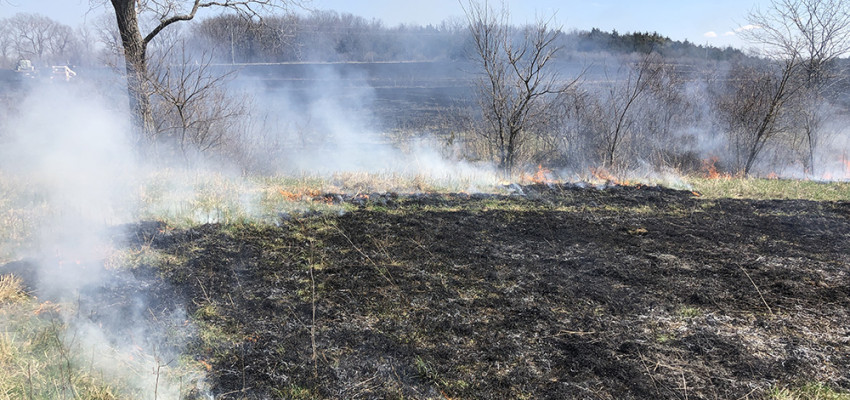
If you’ve lived in Kansas during spring, you’ve likely smelled the evidence of pasture burning season in the air. Every spring, cattle farmers and ranchers across the state burn their pastures, through the process of prescribed burning, to get rid of the winter’s dead plant matter and undergrowth and to prime the land for new green grass.
While it may seem excessive to burn pastures every year, there are several reasons why we conduct prescribed burns on the pastureland we own and lease.
We may not burn every pasture every year, but we have a specific plan based on the species and amount of dead grass, the weather, how the pasture may be used that year, etc.
The pastures we manage are mostly either fescue or native grass. While we don’t burn our fescue pastures, it’s quite common for us to burn the native grass annually.
Brush and/or weed control is one of the primary reasons we burn our pastures. Invasive plant species such as weeds and cedar trees, if not burned, will easily take over a pasture and choke out the grass. In the Tallgrass Prairie and Flint Hills region west of our ranch, prescribed burning helps maintain the grasslands.
Without burning, the prairie would become a cedar forest. I love trees as much as the next person, but it would bring tears to my eyes to see the grasslands around me transform completely into a region similar to the woody Ozarks.
Burning also reduces the risk of naturally occurring, disastrous wildfires. These devastating fires, which are more likely to occur during drought periods, can cause catastrophic damage when they are fueled by dry dead grass, underbrush and other built-up plant growth that hasn’t been properly managed. In general, prescribed burns help preserve the native grass in our pastures, naturally control weeds, prevent widespread wildfires and maintain our grassland ecosystem.
Additionally, research has shown that cattle gain weight more easily on pastures that have been burned. Regardless of whether we have cow-calf pairs or young cattle grazing the pastures, weight gain is important to our cattle’s health and the profitability of our ranch. Prescribed burning also makes way for fresh green grass. Once the burn is completed, we let the pasture rest so grass can grow back and start to flourish for several weeks before turning cows out. Allowing such growth provides the root system of the grass to take hold and strengthen, which improves the overall water holding capacity and soil health of the pasture.
It’s important to note farmers and ranchers don’t underestimate the responsibility of managing fires and grasslands – a tremendous amount of planning goes into prescribed burns. We consult with our neighbors, landowners and local fire departments to ensure fires don’t unintentionally spread to other ranches, and also to prevent them from causing danger or harm to buildings, hay stores or roads. Backfires are also employed to carefully control the prescribed burns. Burning days can be long and stressful because we must make sure the fires don’t get out of control, and we also must manage around the notorious Kansas wind. Difficulties aside, we are doing the right thing for managing our pastures, cattle and our ranch.

